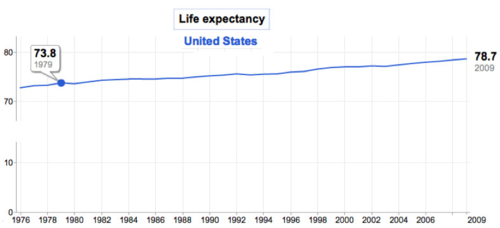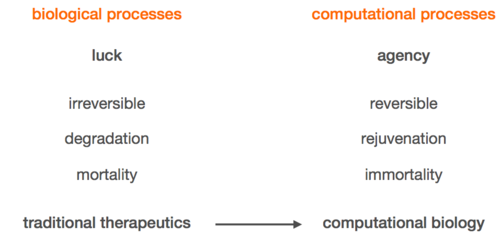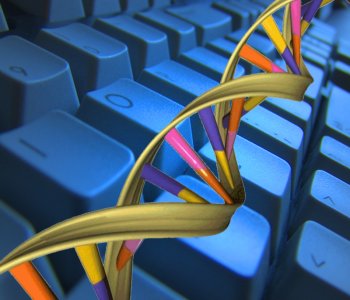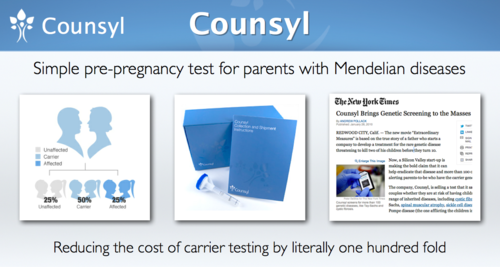Course lectures "Startup". Peter Thiel. Stanford 2012. Session 16

In the spring of 2012, Peter Thiel ( Peter Thiel ), one of the founders of PayPal and the first investor of Facebook, held a course in Stanford - “Startup”. Before starting, Thiel stated: "If I do my job correctly, this will be the last subject you will have to study."
One of the students of the lecture recorded and laid out a transcript . In this habratopic degorov , translates the sixteenth lesson, the editor astropilot .
Session 1: Future Challenge
Activity 2: Again, like in 1999?
Session 3: Value Systems
Lesson 4: The Last Turn Advantage
Session 5: Mafia Mechanics
Activity 6: Thiel's Law
Activity 7: Follow the Money
Session 8: Idea Presentation (Pitch)
Lesson 9: Everything is ready, but will they come?
Lesson 10: After Web 2.0
Session 11: Secrets
Session 12: War and Peace
Lesson 13: You are not a lottery ticket
Session 14: Ecology as a Worldview
Session 15: Back to the Future
Session 16: Understanding
Session 17: Deep Thoughts
Session 18: Founder — Sacrifice or God
Session 19: Stagnation or Singularity?
Lecture 17 - Understanding
After the lecture of Peter, three guests joined the discussion:
')
1. Brian Slingerland (Brian Slingerland). Co-founder, President and CEO at Stem CentRx;
2. Balaji Srinivasan (Balaji S. Srinivasan), CTO of Counsyl and
3. Brian Frezza, Co-founder of Emerald Therapeutics
I. Project “Longevity”
For how many years longer can people actually live? This question is still open. It may be extremely difficult to answer. But, there is a feeling that biotechnology is well positioned to try it. Biotechnologies that are developing as a result of the computer revolution look very exciting if we think that a whole set of problems — cancer, aging, and death — are close to their solution.

Even without the biotech revolution, life expectancy has increased significantly. Growth was about 2.5% decade after decade. From the middle to the end of the XIX century, life expectancy increased by 2.3 - 2.5 years every decade. If you build a graph of points corresponding to the maximum life expectancy for each country (as a rule, we will talk about women's life expectancy), then in the aggregate you will see a straight line. This is not entirely consistent with Moore's law, but rather similar to it. In 1840, life expectancy was only 45-46 years. In the past century and a half, the problem of extending life has been exponentially more complex.

To some extent, the United States in this issue a little behind. Life expectancy here is a couple of years below the world maximum. Different reasons are called: Americans eat bad food, Americans are not physically active, and so on. But, although the US is lagging behind, the trend remains the same - the life expectancy is constantly increasing.

You can look at this question in a different way: each extra day you live adds 5-6 hours of your future life. This is a startling conclusion! The question is what will happen next. Will the straight line on the chart stay straight? Will the process slow down? Will it accelerate? Until 1840, the increase in life expectancy was almost linear. Only recently has it really accelerated sharply. Maybe this is a short surge, which will soon end, or is it only the very beginning of a sharp acceleration? All this remains to be seen.

Ii. Good luck, life and death
A. Death as bad luck
In a sense, longevity is the opposite of bad luck. In a global sense, when you are not lucky - you get into trouble. Think of everything that could go wrong. Perhaps a part of your DNA mutates and starts to develop cancer. Perhaps the car will kill you. Maybe an asteroid will fall on you. Much of what might not be lucky. Thus, the question of extending life can be asked in the form - which of these troubles and in what volume can be overcome.
From the 17th to the middle of the 19th century, the prevailing view was that we could cope with any of these troubles. The work “New Atlantis” by Francis Bacon was a classic vision of utopia, free from accidents. It was New Atlantis, because, in contrast to the old, destroyed by the gods, in New Atlantis, the Atlanteans had full power over nature.

This point of view began to lose ground around 1850. Luck and uncertainty are becoming increasingly dominant concepts as a basis for thinking about the future. This shift was probably due to the development of actuarial calculations and life insurance. When people started working with data, it became clear that life and death can be reduced to probability functions. The probability that a 30-year-old person dies in the same year is 1 in 1000, whereas for a 100-year-old this probability is already 50%.
If we work a little with this mathematics, it becomes clear that the solution to the problem of eternal life is to solve a simple equation:

- probability of dying in year x
- probability of not dying in year x
- the probability to live to the end of the year n
- the chance to live forever
- the mortality equation
Unlimited probabilistic thinking can be dangerous. It kills a person’s ability to shape the future. The movie " Old Men Are Not Here " describes this moment well: one day you will not be lucky, and you will be shot at a grocery store in Texas. If everything is just an accident, you have nothing left but to accept fate. However, this approach does not take into account your ability to think and decide whether to get involved in a game in which too much depends on luck.
A small historical footnote: In 1700, the statement that people could live forever seemed more realistic than today simply because there were people who claimed that they were 150 years old. Since there was practically no accounting at that time, good “marketers” could convince other people that they were of a very honorable age. Today it is quite easy to understand the motives of these people. If you are a 70-year-old old man in London at the beginning of the 18th century, then you will be perceived as just another miserable person and will not be given special help. However, if you are 150, this changes everything, and you can even count on retirement from the King himself.
B. Transition to certainty
Can we move biology from the world of statistical and probabilistic approaches to something more definite and solvable?
It depends on many factors.
You can think of death as an accident. There are various types of accidents. You can decompose them into a spectrum - from microscopic (such as genetic mutations) to macroscopic (accidents) and cosmic-scale incidents (the fall of asteroids).
To finally solve the problem of aging, you must get rid of all these troubles. But there is a feeling that certain macro and cosmic incidents in any case are and will remain random events. However, the solution of these problems can be postponed - even if we can deal with microscopic incidents - the lifespan can already be increased to 600-1000 years.

Iii. Computer Science and Biology
A. Complexity of the task
Like death itself, the process of finding new drugs depends largely on luck. Scientists start with an analysis of about 10,000 different compounds. After a lengthy selection process, of these 10,000, about 5 remain, which are admitted to the third phase of testing. Maybe one of these 5 drugs will be tested and approved by the FDA . This is quite a long and largely random process. That is why the launch of a biotechnology company is extremely risky. Most of them exist for 10-15 years. During this period, you can hardly control the process. What seems promising may not work at all. There is no iteration, no sense of approaching the goal. There is only a binary result (“yes” or “no”) at the end of a largely random process. You can work hard for 10 years and don’t know until the very end whether time was wasted.
In Internet businesses, the basic rule is that a company is successful if each subsequent round of financing is more successful than the previous one. In biotechnology, this is almost impossible. Investors are tired. Nothing works. Some investors frankly declare that they are not concerned with valuations, since everything will come to them anyway, even if in the next round there will be a dilution of capital with a decrease in the value of shares or their additional issue. What is the point to discuss the assessment, if everything depends only on luck?
In fairness, we must recognize that all the processes focused on luck and statistics that have dominated people's thinking have worked quite well in the past few decades. But this does not mean that it makes sense to continue to focus on chance. The cost of discoveries obtained by such methods can grow very quickly. Perhaps we have already found everything that is easy to find. If this is so, then it will be difficult for us to develop, having nothing in our hands except random processes. This will be reflected in research costs. In 1975, the cost of developing a new drug was $ 100 million. Now it is 1.3 billion. Probably all the funds that have invested in biotechnology have lost money. Investing in biotechnology was also unwise how to invest in environmentally friendly technologies.

B. The future of biotechnology
Drug development is essentially a search task, and the search area is extremely large. There is a huge amount of possible connections. An important question is whether we can use computer technology to reduce the impact of the event. Can computer science make biotechnology more deterministic? At the most basic level, biological processes can be considered as attracting a quantum of good luck into the process of irreversible degradation. Traditional therapy largely reflects these processes. In contrast, computational processes are reversible. You can study and reprogram processes as needed. The main question is the extent to which biological tasks can be reduced to computational.

| Biological processes | Computational processes |
| luck | organized processes |
| irreversible | reversible |
| degradation | rejuvenation |
| mortality | immortality |
| traditional therapy | computational biology |
The cost of determining the primary structure of DNA micromolecules is rapidly decreasing. In 2000, it cost 500 million dollars. Today it can be done for 5 thousand. In a year or two, it will probably cost $ 1,000. The question is, can we really do with the information we receive everything that we have assumed.
"This discovery will lead to revolutionary improvements in the diagnosis, prevention and treatment of most, if not all human diseases."
Bill Clinton 2000
The Human Genome project was seen as incredibly revolutionary in the late 1990s. But his result did not match all the hype created around. Perhaps the project appeared too early or was too expensive. But another reason for the failure can be that the decoding of the genome itself is not a problem at all. The main problem may be that we simply do not know what to do with the obtained data. The question of exactly which part of the problems of biology can be reduced to computational problems is still open.

Iv. Examples
We will highlight some issues and then discuss them with representatives of three companies that deal with extremely interesting issues in biotechnology: Stem CentRx, Counsyl and Emerald Therapeutics.

Of these three companies, Stem CentRx is the closest to traditional biotechnology. But, nevertheless, a significant part of their tasks is computational. Their main goal is to cure all types of cancer. They state that cancer tumors contain stem cells, which are significantly different from the main tumor cells. It is this type of cell that controls the development of the disease and the tumor. Thus, they are trying to influence stem cells and thereby defeat cancer.
Seen from the outside, the problem is that chemotherapy can be extremely ineffective in treating cancer. It is very difficult to calculate the required dose. Too low doses are ineffective. Too high kill the patient along with the disease. So, if you can isolate a subset of cells that are responsible for growth and act directly on them, chemotherapy can be made much less destructive and much more effective. Until now, studies of Stem CentRx in mice have been very promising. We need to find out if this approach works for a person over the next year or two.
Counsyl is a company that works in the field of bioinformatics. Their goal is to capture the market for genetic screening for pregnant women. They developed one simple test for approximately 100 genes that can be tested to determine the presence of hereditary diseases. They focus only on diseases inherited according to the laws of Mendel , as it is still too difficult to determine how more complex genetic combinations work. Thus, Counsyl defined a real and very clear set of tasks. Today, Counsyl is involved in screening about 2% of newborns in the United States and expects this number to increase significantly in the coming years.

Emerald Therapeutics uses calculations more than any other of the companies represented. Their main goal is to cure all viral infections by reprogramming cells, that is, turning cells into programmable machines. The idea is to build a molecular machine that will tag cells that contain viruses, and then command these cells to self-destruct. At the moment, the work of Emerald is classified and we can not tell more. However, the high level of paranoia in companies operating in the field of programmable antiviral therapy, explain. They work with great secrets that will be relevant for a long time, unlike, for example, web applications that have 6 weeks to take over the world.
So, let's talk to Brian Slingerland from Stem CentRx, Balaji Srinivasan from Counsyl and Brian Frezza from Emerald Therapeutics.
V. Perspectives
Peter Thiel : Marc Andreessen attended our classes a few weeks ago. He said that on the Internet at the end of the 90s, many ideas were essentially correct, but their time had not come yet. Even if we agree that the next phase in biotechnology is an increase in the use of computing, how can you know that now is the right time? How do you know that you start taking the first steps not too early?
Balaji Srinivasan : The decoding of the genome is similar to the first packets sent via ARPANET. This is proof of concept. The technology already exists, but for people it is not sufficiently convincing. Thus, the creation of something that really works, leads to the emergence of a huge market in which people can really come and get the gene created. Just like with email and word processors. Initially, these things were uncomfortable. But when it became possible to visually demonstrate their benefits, people left their comfort zone and accepted them. Testing pregnant is one of the key areas. People find it important to make sure their children are as healthy as possible. And then, probably, many more positive things can be done with the obtained data.
Peter Thiel : So the question is, how can you help people overcome the common fear of the genome decoding procedure? And the answer is: “Do it for the kids?”
Balaji Srinivasan : Yes. No one will spend 1000 dollars to buy a computer just to sit on Twitter. But when you already have a computer, you don’t need to spend extra money to start using Twitter. Thus, solving the problem of initial implementation is the first step. Empirically, we are already starting to see a very confident acceptance of this technology. Thus, we are confident that we can solve the problem of implementation.
Peter Thiel : Talk about cancer is exciting, but alarming at the same time. This is an old problem. Nixon said in 1970 that by 1976 we would win the war on cancer. People have been working on it for 40 years. And although now we are 40 years closer to the decision, it still seems to be farther than ever. Is the fact that the solution to this problem has already taken so long does not mean that this problem is incredibly complex and will not be solved in the near future?
Brian Slingerland : People in general have been following the same path for the past 40 years. A common approach to treating cancer is “carpet bombing” chemotherapy or the like. All approaches that have been used previously are, in fact, remarkably similar. We decided to take a completely different path. 40 years of failure taught us something important. Previously, the main metric of therapeutic efficacy was to reduce the size of the tumor. However, this metric is not the best - tumors can shrink and then grow again. Focusing on reducing the size of a tumor can lead to exposure to the wrong cells. Using bioinformatics helps us to see more correct approaches. Thus, we do not agree that the problem will not be solved in the foreseeable future; we firmly believe that we have a good chance to do just that.
Brian Frezza : The answer to the half of the question is already there - we definitely were not late, as the viruses still exist. Isn't it too early? I do not think so. The public view of public health is quite different from reality. Industry players paranoid protect their secrets until the release of the product. People underestimate this moment and pay attention only to what and when it is introduced to the market. What people see at this particular moment, began to be developed over dozens of years of how they began to think about it.
In the late 70s - early 80s, new technologies of DNA recombination and the development of molecular biology of biotechnology received a significant surge. Genentech led from the late 70s to the early 80s. Nine of the top 10 biotech companies in the United States were established in this short period of time. Their technology came out 7-8 years later. And it was a window: after that, not many new integrated biotechnology companies appeared. There was some material to find. People found it. Before the advent of Genentech, the main focus was on pharmacology, not biotechnology. This window (becoming an integrated pharmaceutical company) was closed for about 30 years before Genentech appeared.
Thus, we put the fact that while the window for traditional biotech companies is closing, the window for computer biotechnologies is only beginning to open. The one who crawls through this window will be able to gain a foothold. There are huge monopolistic barriers to entering the market. Here, the one who makes the first move often becomes the one who takes advantage of the last move. Imagine that IE or Chrome would have to go through clinical trials, just to get to the market. It would be much more difficult to enter the game. Thus, the one who can develop a good technology and bring it to the market first will have an advantage.
Peter Thiel : Let's talk about your corporate strategy. Even if your technology works, how do you plan to distribute it?
Balaji Srinivasan : If you think that drugs, biotechnologies, and now genomics are essentially different entities, then you will understand that companies working with genomics can work in a completely different way. Genomics relies much more on computation than pharmacology or traditional biotechnology. In molecular diagnostics, but not in traditional therapy — if you examined samples, then you are on a superhigh-speed highway. The rules of the Internet apply. You can go from concept to product and sales in 15-18 months. This is not as fast as with Internet businesses. But it is much faster than the 7-8 years that are required in traditional biotechnology. In the early 90s, a window for Web 1.0 was opened. In the late 90s there was a window for Web 2.0. Now it is the turn of genomics. We think that the task of biology is sensors and data collection. .
: Stem CentRx . 3 . , , . .
: , . . , — , . . , . , . git . . , , .
: , ? , , , , .
: : . , , , . . — . . . — . , . , . . , , , 20 . — , , .
, .
, . .
: , . . . Genentech, , . , . ; . , .
, . , Ruby Therapeutics, , . , , . , , , .
: . -. , - , . - . , . , , , . , , . , .
, , 10 . , , .
: , Ruby Therapeutics 10 , ? , ?
: , , , . . — , — , , , . .
. . 2^n — . , .
: , . . MBA , , . — , , — , . , .
: , , , Facebook, , .
: , - . ?
: , . , .
. , , ? It is hard to say. , , . , , . ? . .
, , . . , - , . , . , — .
: . : “ , Google. ”. , . . , .
: , , , , . . , Stem CentRx. , , . , ?
: , , . , . []
. “ , . — ”. . : “ ”.
: []
: , FDA . , , . . . , , . SpaceX , . . .
: , , ?
: . , . , , .
: HIPAA ?
: HIPAA , . . .
. . , . , , , . , , , , . , . , , .
: , , , ?
: . . . . Instagram . . , . , , .
: . , . 1920-1923 , . , Heroku, . , . , 18 .
: , . Genentech , Apple — 1976. . . , .
: “”.
: , . , , . , . , , , , , .
: “ ” . , . , . , , .
: , ? ?
: . . — , . . , , .
: ?
: . 100% , , . . , , , , . . .
: - . PayPal , , . , . Delegate Everything ( ), , , , .
: . . , . , - . . , . , .
:
I ask translation errors and spelling in lichku. degorov , astropilot , .
Source: https://habr.com/ru/post/185978/
All Articles